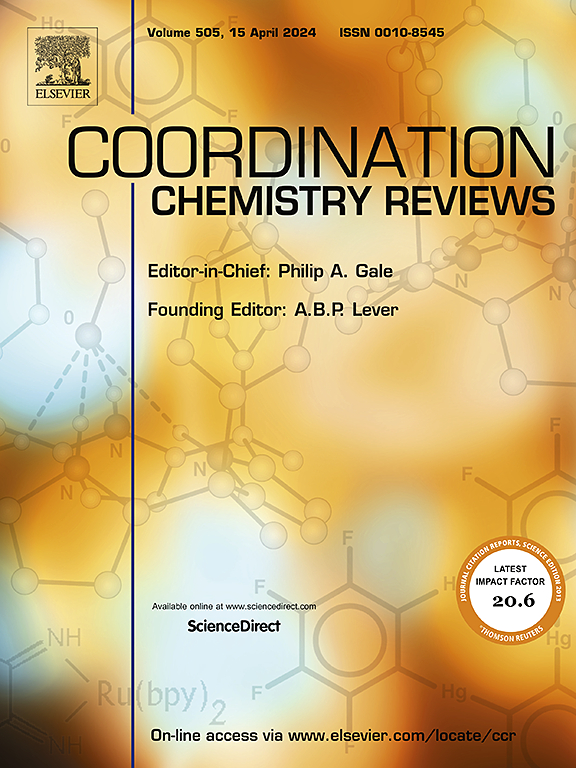Design of the photocatalyst for H2O2 production by oxygen reduction reaction
IF 20.3
1区 化学
Q1 CHEMISTRY, INORGANIC & NUCLEAR
引用次数: 0
Abstract
Photocatalytic oxygen reduction reaction (ORR) for hydrogen peroxide (H₂O₂) synthesis has gained significant attention as an environmentally benign and sustainable alternative to the energy-intensive anthraquinone process. In recent years, substantial progress has been achieved in research related to photocatalytic ORR. However, energy conversion efficiency is still limited by challenges in mass transfer and surface reaction kinetics. The development of high-performance photocatalysts is essential for realizing energetic solar energy conversion for H₂O₂ production. In this review, based on the basic principle of photocatalytic H₂O₂ generation, we systematically deconstruct the design strategies of photocatalysts from three key factors determining the performance, namely, the utilization rate of photogenerated charge, the availability of surface oxygen, and the formation and adsorption of OOH⁎. Simultaneously, the future research direction and potential breakthroughs in this rapidly developing field are prospected. This review aims to offer valuable insights into the rational design of ideal photocatalysts to accelerate the advancement of solar-powered H2O2 production.


氧还原反应产H2O2光催化剂的设计
光催化氧还原反应(ORR)合成过氧化氢(H₂O₂)作为一种环保和可持续的替代能源密集型蒽醌工艺受到了广泛关注。近年来,光催化ORR的相关研究取得了实质性进展。然而,能量转换效率仍然受到传质和表面反应动力学方面的挑战。高性能光催化剂的开发是实现高能太阳能转化生产H₂O₂的关键。本文基于光催化生成H₂O₂的基本原理,从决定光催化剂性能的三个关键因素,即光生电荷利用率、表面氧的可用性以及OOH的形成和吸附,系统地解构了光催化剂的设计策略。同时,展望了这一快速发展领域未来的研究方向和潜在突破。本文旨在为合理设计理想的光催化剂以促进太阳能H2O2生产提供有价值的见解。
本文章由计算机程序翻译,如有差异,请以英文原文为准。
求助全文
约1分钟内获得全文
求助全文
来源期刊

Coordination Chemistry Reviews
化学-无机化学与核化学
CiteScore
34.30
自引率
5.30%
发文量
457
审稿时长
54 days
期刊介绍:
Coordination Chemistry Reviews offers rapid publication of review articles on current and significant topics in coordination chemistry, encompassing organometallic, supramolecular, theoretical, and bioinorganic chemistry. It also covers catalysis, materials chemistry, and metal-organic frameworks from a coordination chemistry perspective. Reviews summarize recent developments or discuss specific techniques, welcoming contributions from both established and emerging researchers.
The journal releases special issues on timely subjects, including those featuring contributions from specific regions or conferences. Occasional full-length book articles are also featured. Additionally, special volumes cover annual reviews of main group chemistry, transition metal group chemistry, and organometallic chemistry. These comprehensive reviews are vital resources for those engaged in coordination chemistry, further establishing Coordination Chemistry Reviews as a hub for insightful surveys in inorganic and physical inorganic chemistry.
 求助内容:
求助内容: 应助结果提醒方式:
应助结果提醒方式:


